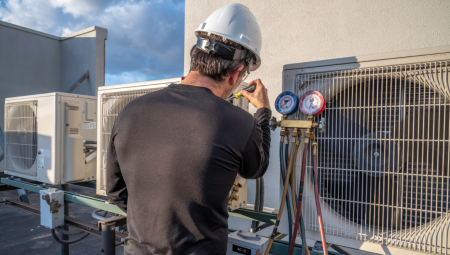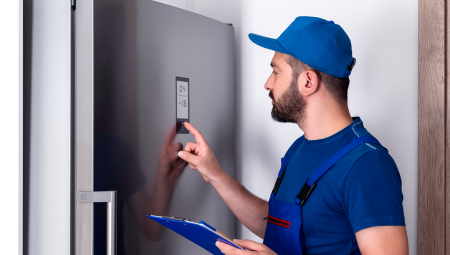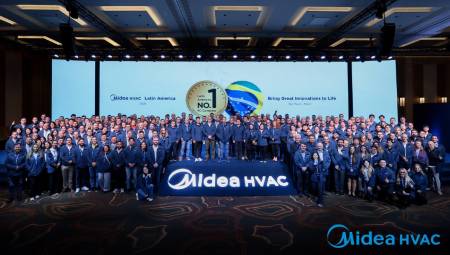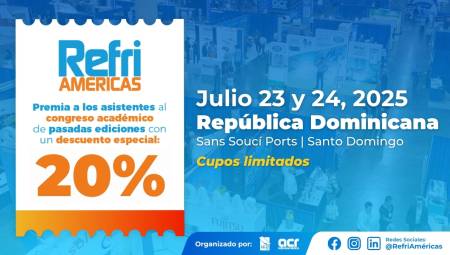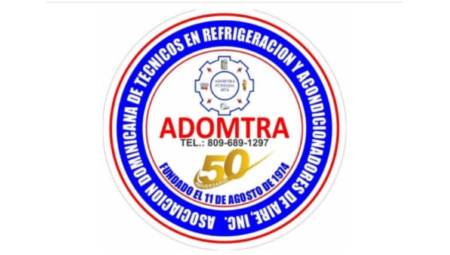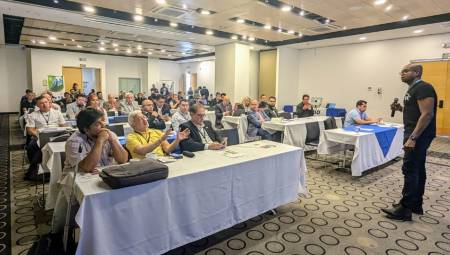This time it's the turn of steel. To the economic catastrophe derived from the increase in the prices of copper, oil and gold is added that of the material derived from iron. The CVAC/R industry also suffers from this situation.
by Julián Arcila
The economic outlook is not very flattering and everything seems to indicate that the raw material will continue to rise. The fervent growth of Asian economies has resulted in an uncontrollable increase in their prices.
There are many economic segments that have been mistreated by this situation and those who are most affected are almost always the end users, who must endure the increases in finished products. The only moderately positive thing is that the current environment has oscillated between two major trends that contradict each other and somehow compensate so as not to hit consumers excessively. Thus, for now, the revaluation of Latin currencies has compensated for the increase in the price of air conditioners, parts for refrigerators and cooling systems.
What is not so good is that some economies are already showing signs of contraction, such as Mexico, which has been greatly affected by the US recession, and Colombia, which will grow by 7.5% during 2007 and its growth to between 4 and 5% for this year. The Latin panorama, except for some nations such as Brazil and Peru, is beginning to show signs that the furor of raw materials could be coming to an end, if the necessary measures are not taken.
ACR LATINOAMÉRICA interviewed three industry professionals, from different segments, who explained the implications of this situation for the CVAC/R sector. The projections are not very positive, since the chances of the current situation abating are very low.
On an upward curve
But beyond talking about other raw materials, a topic that I discussed earlier in this magazine, what is giving us something to talk about is the alarming increase in the prices of steel, a fundamental raw material for sectors as important for any economy as construction, automotive and heavy industry.
There are many figures that are handled with respect to steel prices; historically the increase began at the beginning of this decade. According to data published by the Panamanian newspaper La Prensa, citing sources from the Panamanian Chamber of Construction (Capac), in 2003 the ton of steel was at U$220; in 2004, in one of the peaks that this material has had, it reached U$700, which changed in 2005 the year in which it began to descend. In 2006 it reached U$450 per ton and then began to rise to current values, reaching even U$1000 per thousand kilos of the metal.
It is worth saying that in the Latin context Panama is one of the largest consumers of steel, thanks to factors such as the expansion of the interoceanic canal, the dynamization of the real estate sector and the development of various infrastructures, elements that at the same time have been fundamental for its economic growth, one of the most important in the region in recent years.
The automotive industry is another of those that globally has been affected by this situation; Multinationals of the stature of Volvo have felt the effects of the price of steel and in the specific case of the Swedish company this has resulted in a 5% increase in the values of its machinery and various components.
The rise in steel has its foundations, basically, in the great demand for this material in China and in other regions, such as the Middle East, paradise of the construction of hotels, financial and commercial centers, among others. In total, steel price growth over the past year has been close to 75%.
In addition to Asian demand, the price of oil has also impacted steel tariffs, as it should not be forgotten that China is the world's leading producer of this material (at the end of 2006 it produced 422.7 million tons) and who consumes it the most as well (it has come to mean 25% of total world consumption). Thus, the fact that steel must be moved from the Asian giant to other nations makes the iron derivative more expensive due to the effect of fuel prices.
{mospagebreak}
The CVAC/R case
There are many industries that have been harmed or "beaten" by this situation. The most worrying thing is that the unbridled consumption of steel was the response to the shortage that occurred in other raw materials, such as copper. This was the case in the CVAC/R industry, where other possibilities have also been explored, such as aluminum, an input that is also rising in price.
But what about the air conditioning and refrigeration industry? This material is fundamental for the construction of complete solutions, parts and spare parts for the new market and the aftermarket. AC/R LATINOAMÉRICA randomly selected three companies to ask them how they had been harmed by this situation.
It is worth saying that steel has an important role in the manufacture of air conditioning and refrigeration solutions, because in addition to being part of the housing (structure) this material is also used in the manufacture of various parts for the interior of the systems. Given the current scenario, many companies have already begun to make substitutions in materials to compensate for this trend.
One of the most affected segments is that of engines. Gustavo Navarro, A.O. Smith's sales manager for Latin America, said that steel is the fundamental component of about 90% of the equipment they sell. In his opinion, prices have risen not only because of consumption, but also because of a matter of speculation, in which distributors have a lot to do. "They are buying large quantities of steel taking advantage of the high price; they are retaining these materials and they are playing with prices and they have seen that releasing inputs little by little is something beneficial," he said.
In his opinion, the various manufacturers of electric motors have been harmed by the situation and have been forced to announce frequent increases in prices. "Five or six years ago what you saw was an increase per year and sometimes not even this was observed. On the other hand, now, some manufacturers announce two and even three increases in the year and even some engine production companies have been closed while other companies are not even making a profit," Navarro revealed.
In the opinion of Arturo Mor, president of Articco, a firm dedicated to the manufacture of parts and accessories for the refrigeration sector, the rise in the price of steel has several edges. On the one hand, he agreed with Navarro that speculation has led to the current situation. "When the dollar fell, investors were looking for gold. Now they have wanted to explore other segments and this led to the increase in the values of metals, but also of other products such as grains. Consumption, however, has not risen that much." He also mentions the growth curve observed in Asian consumption, a situation that recalls what happened in the 90s, when the initiative to provide each Chinese household with a refrigerator led to the crisis of shortage of compressors, since production was destined almost entirely to meet eastern demand.
No less important is the global increase in steel consumption, which happened as a market response to the increase in the price of copper, whose metric ton went from U$2000 to U$8500 (according to Mor the price of copper increased by approximately 400% in just three years). The growing demand led to the rise in the price of steel, a metal that in his company is mainly used for the development of filters, suction accumulators and stone filters, among other products; vibration eliminators are made of stainless steel, an input that has also risen considerably. "The increase in steel prices has impacted the gross value of the product, which without labor has grown by 70%," Mor said.
But to the rise in the price of steel must be added situations such as the devaluation trend of the dollar, which makes all inputs more expensive; According to Mor, the costs of accessories have risen by 30% due to the fall in the real value of the North American currency. However, Arturo explained that the situation is not yet so serious, since steel prices have only grown by 50%, a situation very distant from that which occurred with copper.
For his part, Denis Schiavi, nordyne International's sales manager for Latin America, explained that the rise in steel prices is mainly due to the fact that new consumers have joined the world map; "Previously only the United States consumed, now Europe, China and India do. Thus, in this panorama, there is much more demand than supply," he said. He also recalled that raw materials have become more expensive due to the same consumption: "Steel and copper at the time were economical, but with current prices they are leading companies to look for new alternatives, which would stop being used if these metals fall in price; but this is not going to happen for now," he said.
It is important to note that air conditioner manufacturers use steel mainly in the structure of equipment. However, the material is replaceable in those parts that do not affect the structural rigidity of the product and that do not lead to excessive vibration.
What's next
Based on the projections made by the experts, but also from the opinions of the professionals interviewed, the upward trend in steel and raw materials will continue. Therefore, companies must resort to their greatest ingenuity to prevent business from becoming unsustainable. Options range from discovering new technologies to finding new raw materials to developing shopping habits.
Gustavo Navarro, of A.O. Smith, said that companies should invest more in research and development, thus generating new technologies for the manufacture of engines. "This includes looking for alternative metals that may be cheaper like aluminum or zinc. The former is currently being widely used in motor winding, as an alternative to copper. Another option would be cost reduction through improved manufacturing processes," he suggested.
Arturo Mor also does not believe in a change of trend or a reduction in prices in the medium or short term. He said that one of the alternatives he has found to shovel such a situation is to schedule steel purchases for certain periods of the year when the price of the material is low, such as December and July. "The trend is upward and in the specific sector of components, due to the pressures required, there is currently no other material that can be taken as a viable alternative," he said.
Denis Schiavi agreed with the above and assured that the costs of materials will continue to rise because of the depreciation of the dollar. "As commoditieties are quoted in dollars and this is devalued because prices go up," he said. However, he said that the CVAC/R sector will not be affected, as costs are affecting all sectors equally. "Air conditioning is something necessary and it is not a luxury that can be eliminated," he said.
Faced with the actions that Nordyne International has taken to counteract this situation is the replacement of steel by composite materials, similar to plastic; this has been done in the most modern equipment. As Schiavi explained, they began to be used because they reduced vibrations and were anticorrosive, in addition to other advantages; although at the time they were more expensive, today the values of using them are lower than if steel were chosen.
The CVAC/R industry has a huge challenge ahead of it, mainly when it comes to discovering new ways to contain the rise in raw materials. However, excessive pursuit of economy cannot be allowed to lead to a deterioration in the operation of equipment. After all, implementing solutions that involve drastic modifications does not seem to be viable.





